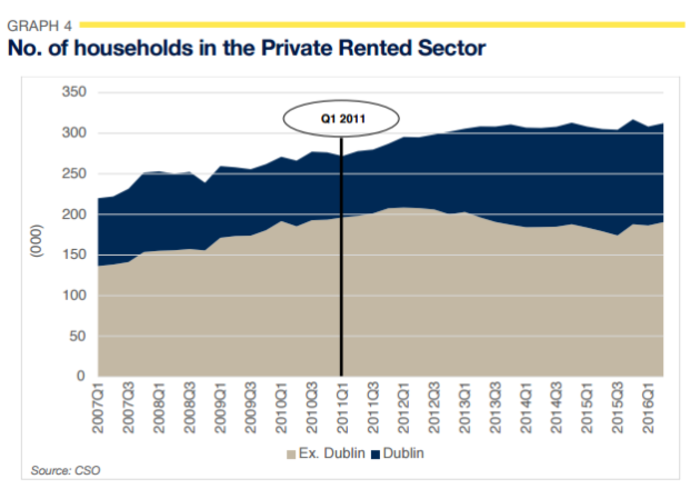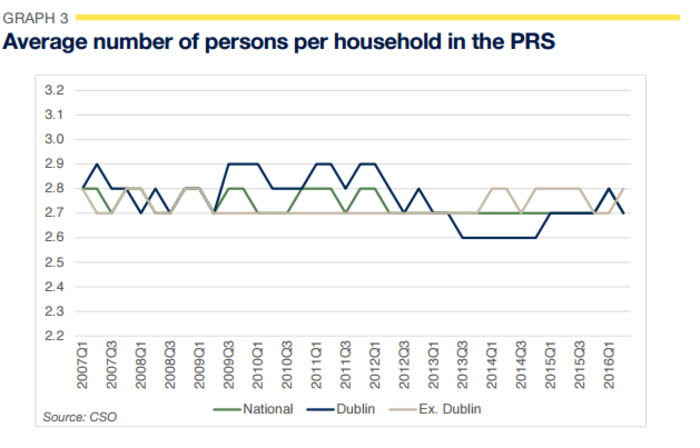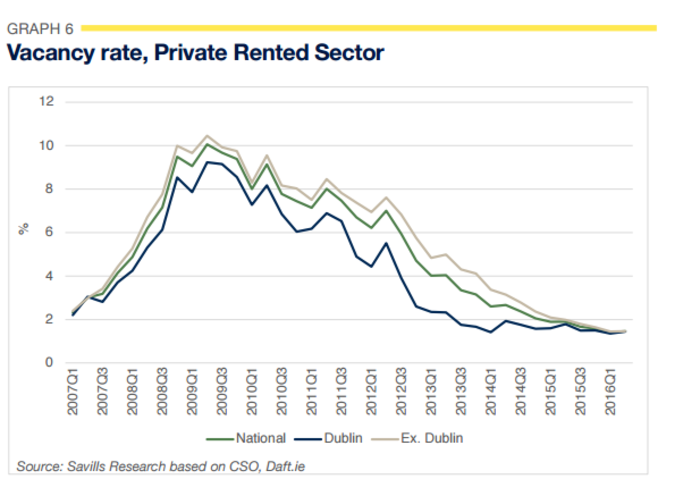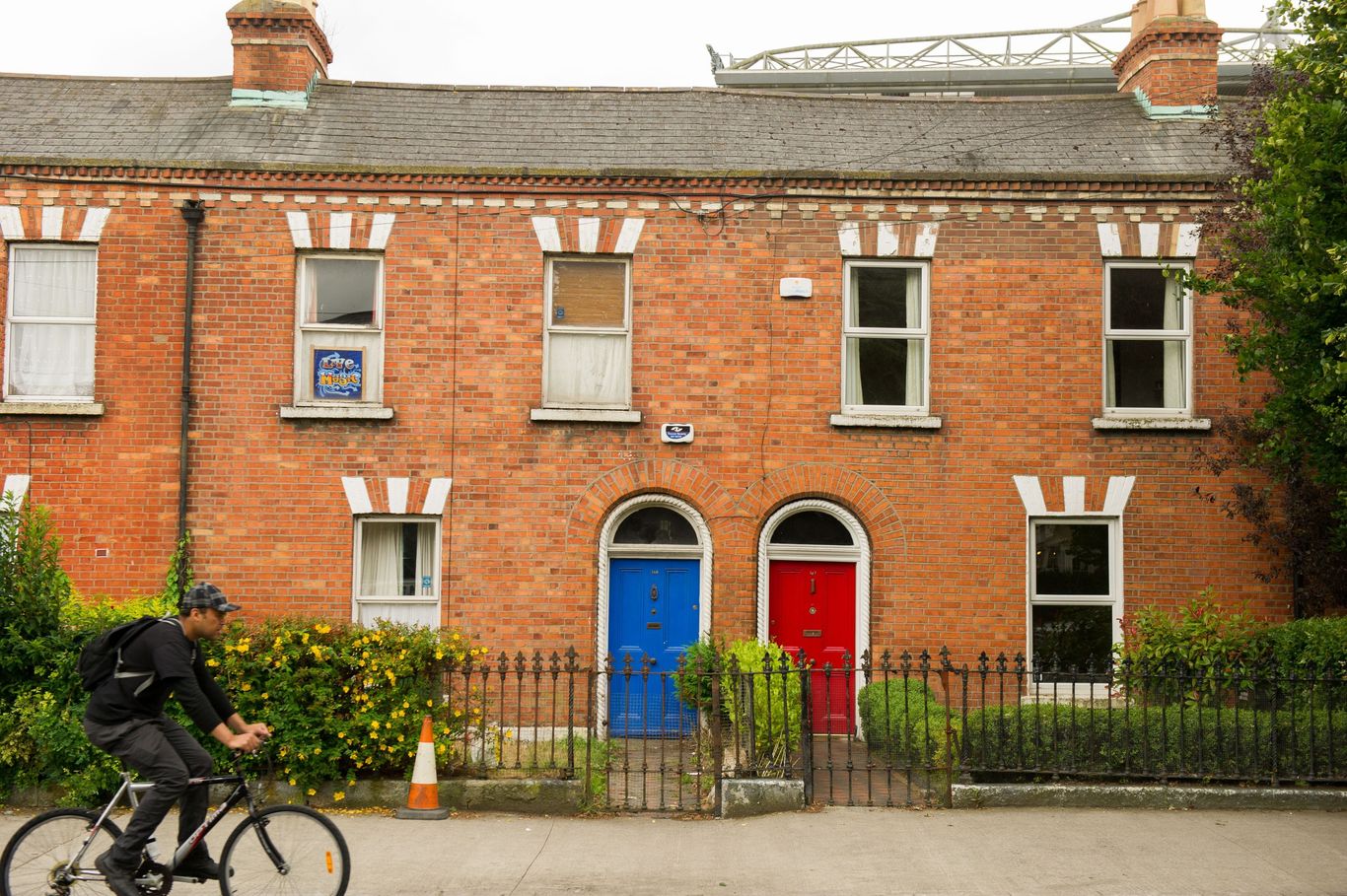Irish rents expected to soar by almost 25% over the next two years
New stats also show that the number of people renting has ballooned since the crash.
JUST UNDER a quarter of households in Dublin are living in privately rented accommodation, a figure that has shot up since the crash.
That is according to new research from property group Savills, which also found that rents could rise by about 25% across the country by the end of 2018.
The study shows that, as of the end of June 2016, 24.5% of all households in Dublin live in privately rented accommodation.
This is up from 17% of households in 2011, around the trough of the recession. By way of comparison, the corresponding figure for London is 27%.
The report said that, nationally, the number of households renting privately has risen from about 272,000 since the start of 2011 to just over 312,000 as of the end of the second quarter of 2016 – a near-15% increase.
In Dublin, the number of households in the private rental sector has risen from 75,5000 to about 122,000. Outside of Dublin the number of households in privately rented housing has edged down by 5,900 – a 3% decline.
Currently 15.5% of all Irish households outside of the capital are in the private rental sector. The corresponding figure for England, excluding London, is 18%.

Density
The study also notes that there has been has been “no increase in the average number of persons per privately rented household – either in Dublin or outside Dublin – over the last decade”.
“Therefore the increased number of people renting privately has not been achieved by squeezing tenants into larger rented households,” it said.

The study also shows how tight the supply of housing is in the rental sector. In the middle of 2009 the vacancy rate for private rented housing in Ireland peaked at over 10%, however, this has now fallen to below 1.5% – both in Dublin and outside the capital.
“By Q1 2014 the surplus of vacant rental properties in Dublin had effectively run out and the vacancy rate has remained below 2% since this time. Currently the vacancy rate in the Dublin (private rental sector) is just 1.45%,” it said.

The study predicted that, between the third quarter of 2016 and the end of 2018, rents in Dublin will rise by 23.8% while prices outside the capital will increase by 24.7%.
“A ‘confidence interval’ can be calculated around the forecast which is 95% certain to contain the actual outcome, conditional on the input assumptions being accurate,” the report said.
“These confidence intervals show that, if vacancy rates evolve as assumed in this analysis, there is only a 2.5% probability that compound rental growth by end-2018 will be less than 19.2% inn Dublin and 13.8% (outside of) Dublin.”

Overall the study found that across the country the stock of properties in the private rental sector has risen by over 24,000 units to about 124,000 since the start of 2011.
Most of the additional units have come on-stream in Dublin, where there has been a net additional 43,120 units added to the private rented stock since 2011.
Supply and demand
However, Savills said that this expansion has not been sufficient to keep pace with the growth in demand.
The company’s director of research, John McCartney, told Fora that several factors have led to the increased demand for rental properties.
“House prices have continued to rise faster than earnings growth and there is residual damage because of people who lost money during the crash,” he said.
“Their wealth has been depleted and they can’t save for a deposit, (and) that has driven people who would otherwise be house owners into the private rental sector.
“While demand and supply have risen, demand has increased faster than supply which is why prices have risen and will continue to rise.”
Note: This piece was updated to include data on rental prices






